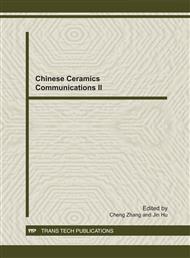p.436
p.441
p.445
p.449
p.453
p.459
p.463
p.469
p.473
The Efficiency Change of Spiral Classifier with Different Overflow Discharge Methods
Abstract:
The basic structure, classification principle and low efficiency of the traditional spiral classifier were analyzed. The trial industrial comparative experiment was carried out by using φ300×4500 spiral classifier with the two-sided overflow and the port side overflow at the same parameter. The experimental results showed that, the qualified fine materials could overflow with the shortest distance by using two-sided overflow method, which avoided circulation circuit of fine materials and reduced the content of-200 mesh fine materials in the sinking sand down lower 2-5 percentage points compared with the port side overflow. At the same time, adjusting the overflow emissions height of two-sided overflow could delay the settling time of coarse mineral which reduced the content of +200 mesh materials of the overflow discharge lower 5-8 percentage points than the port side overflow. Compared with the port side overflow, the classification efficiency was improved about from 40% to 60%, and the average increase rate was up to 17%. The improvement of overflow discharge can be used not only for the adjusting of present spiral classifiers but also for making new machines, which is of a significant application prospect.
Info:
Periodical:
Pages:
453-458
Citation:
Online since:
November 2011
Authors:
Price:
Сopyright:
© 2012 Trans Tech Publications Ltd. All Rights Reserved
Share:
Citation:


